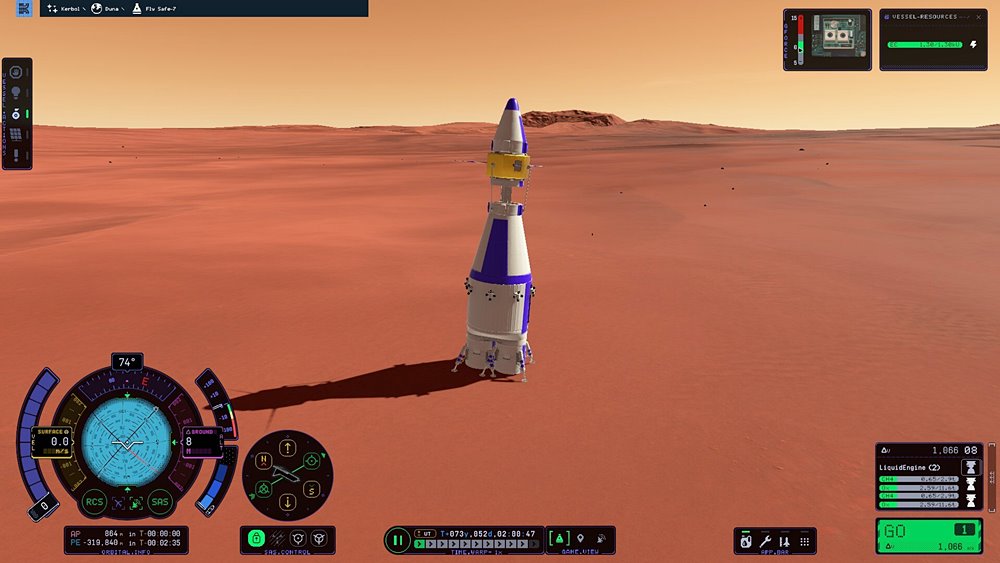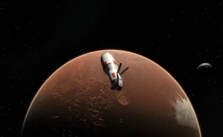Kerbal Space Program 2 Ultimate Beginner’s Guide – Tips for New Players

Kerbal Space Program 2 is an absolutely enthralling space sim game that hands you the reins to design your personal spacecraft, zoom across the heavens & uncover the mysteries of the cosmos. Our all-encompassing guide dives into the nitty-gritty of constructing an awe inspiring rocket, blasting it off into the blue yonder and reaching orbit around otherworldly objects. We’ve got your back, space ace!
Grasping the Fundamentals
Before you can construct a successful rocket it’s crucial to comprehend some basic concepts in Kerbal Space Program 2:
- Gravity: The force that draws all objects toward each other. In the game, gravity influences your rocket’s behavior during liftoff, ascent & orbit.
- Atmosphere: The gaseous layer enveloping a planet. It can generate drag, which decelerates your rocket and creates heat during re-entry.
- Thrust: The force produced by your rocket’s engines. It enables your rocket to counteract gravity and traverse the atmosphere.
- Delta-V: The velocity change your rocket can achieve with its current fuel and engine setup. This concept is vital for planning your missions and ensuring you have sufficient fuel to reach your destination.
Constructing Your Rocket
With a fundamental understanding of the concepts, it’s time to assemble your rocket. Follow these steps to create a functional spacecraft:
- Select a command module: This is where your Kerbals will be stationed during the mission. It’s vital to choose a module with the right size and capabilities for your mission.
- Attach fuel tanks and engines: These supply the necessary thrust to lift your rocket off the ground and propel it through space. Make sure to balance the fuel quantity with your rocket’s weight to optimize your delta-V.
- Build your rocket in stages: In Kerbal Space Program 2, you can construct your rocket in multiple stages. This enables you to discard the weight of empty fuel tanks and spent engines during ascent, making your spacecraft more efficient.
- Connect boosters & struts: Solid rocket boosters can offer additional thrust during the initial launch, while struts help stabilize your rocket and prevent wobbling.
- Install a parachute: A parachute is crucial for safely bringing your Kerbals back to the planet’s surface after the mission.
Gearing Up for Liftoff
Before sending your rocket skyward it’s essential to get ready for the mission. Follow these steps to guarantee a successful launch:
- Verify your staging: Make certain your rocket’s stages are correctly arranged in the staging sequence. This ensures that your engines, decouplers, and other components activate in the proper order during the flight.
- Map out your ascent profile: Identify the most efficient trajectory for your rocket to follow during ascent to maximize your delta-V and reach orbit with minimal fuel consumption.
- Create a maneuver node: In the game’s map view, you can establish a maneuver node to plan and visualize your rocket’s path during ascent.
Blasting Off and Ascending
Now it’s time to launch your rocket and commence your ascent to orbit:
- Throttle up: Ramp up your rocket’s throttle to 100% to maximize thrust during the initial launch.
- Initiate your gravity turn: After achieving an altitude of approximately 1,000 meters, gradually turn your rocket eastward (90 degrees on the Nav Ball). This maneuver, known as a gravity turn, helps your rocket build horizontal velocity, which is crucial for reaching orbit.
- Keep an eye on your ascent: Monitor your altitude, speed, and Apoapsis (the highest point of your orbit) during ascent. Aim for an Apoapsis of at least 70 kilometers, which is above the planet’s atmosphere and prevents atmospheric drag from slowing down your rocket.
- Stage as needed: As you ascend, activate each stage of your rocket when the fuel is depleted or when the stage’s purpose is fulfilled. This helps you shed excess weight and maintain optimal performance.
- Reach your target altitude: Continue your ascent until you reach your desired Apoapsis, then cut your engines by reducing the throttle to 0%.
Entering Orbit
Once you’ve reached your target altitude, it’s time to circularize your orbit and stabilize your spacecraft:
- Plan your circularization burn: In the map view, create a maneuver node at your Apoapsis and adjust the prograde vector until your orbit becomes circular. This will display the amount of delta-V needed for the burn and the estimated burn time.
- Align your spacecraft: Before reaching your Apoapsis, point your rocket towards the prograde marker on the Nav Ball. This ensures you’re facing the correct direction for the circularization burn.
- Perform the burn: As you approach the Apoapsis, throttle up your engines to execute the circularization burn. Keep an eye on your orbit in the map view and stop the burn once your orbit is circular & the Periapsis (the lowest point of your orbit) is above 70 kilometers.
Orbiting and Maneuvering Congrats!
You’ve achieved orbit. Now you can carry out various orbital maneuvers to complete your mission objectives or travel to other celestial bodies:
- Plan your maneuvers: Use maneuver nodes in the map view to plan any necessary burns, such as altering your orbit’s inclination, raising or lowering your Apoapsis and Periapsis, or performing a transfer burn to another celestial body.
- Execute the burns: Align your spacecraft with the maneuver node’s direction on the Nav Ball and perform the burns as planned. Remember to monitor your fuel levels and delta-V to ensure you have enough resources to complete your mission.
Returning Home
Once you’ve accomplished your mission objectives, it’s time to bring your Kerbals safely back to the planet’s surface:
- Plan your re-entry: Create a maneuver node to lower your Periapsis into the planet’s atmosphere, typically around 30-35 kilometers. This will cause atmospheric drag to decelerate your spacecraft and initiate your descent.
- Execute the re-entry burn: Point your rocket retrograde and perform the burn to lower your Periapsis.
- Prepare for re-entry: As you enter the atmosphere, ensure your command module is facing retrograde to minimize heating and stress on the spacecraft.
- Deploy your parachute: Once you’ve sufficiently slowed down and are at a safe altitude, deploy your parachute to guarantee a gentle landing.
- Touch down safely: Monitor your descent and make any necessary adjustments to ensure your Kerbals land safely on the planet’s surface.


